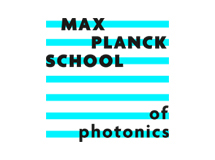
Controlling and steering the nonlinear emission in nanoantennas and metasurfaces
Prof. Michele Celebrano, Physics Department, Politecnico di Milano, Italy
Library, A.2.500, Staudtstr. 2
Abstract:
The last decades witnessed major efforts in field of nanophotonics to attain efficient nonlinear optical effects in nanoscale volumes. This endeavor is driven by the utmost prospect to perform light conversion in integrated devices for optical information processing, sensing and nonlinear digital holography. The main limitation in this scenario is the perturbative character of nonlinear interactions, whose intrinsic weakness is compounded in nanoscale systems. To overcome such fundamental limit the key blueprint consists in exploiting plasmonic and photonic (i.e. Mie-type) resonances – and the associated localized field enhancements – in engineered nanoantennas and metasurfaces to boost light–matter interaction [1]. While it is crystal clear that the conversion efficiencies of nanoscale systems will unlikely reach those attained in bulk crystals, the realized optical powers to date (up to μW) allows anticipating the application of nonlinear nanoscale platforms in a near future. It is therefore crucial to devise approaches for nonlinear signal manipulation, such as light modulation, steering and amplification. In this seminar, I will describe some of our latest attempts in the control of the nonlinear emission from dielectric and plasmonic nanoantennas.
In the first part, I will demonstrate the possibility to modulate the second harmonic generation (SHG) from semiconductor (AlGaAs) nanopillars [2]. SHG modulation is attained through a second control beam with energy above the material bandgap (λ = 750 nm). The employed control beam is either a CW or a pulsed laser. In the first case, thermal effects induce a refractive index modulation, enabling a SHG modulation above 50% [3]. When an ultrafast control is employed, various mechanisms are involved in SHG modulation, which depend on the time scale and are extremely sensitive to the nanoparticle size [4].
In the second part, I will focus on frequency upconversion in individual nanoantennas and metasurfaces. We employ a dual-beam pump configuration, where a pump beam (ω) at telecom wavelengths combines with its frequency-doubled (2ω). Hence, sum frequency generation (SFG) and third harmonic generation (THG) from ω are degenerate at 3ω, which implies that interference between SFG and THG is possible. However, while in AlGaAs nanopillars interference is suppressed due to the symmetry of the system [5], in asymmetric plasmonic nanoantennas [6] a sizeable interference shows up. Hence, by coherently control the pump beams, we obtain up to 50% intensity modulation of the upconverted light [7].
Finally, exploiting a periodically-engineered nonlinear metasurfaces of AlGaAs nanopillars combined with the above dual-beam pump scheme, we obtained all-optical switching of the upconverted telecom photons in the Fourier space. Indeed, using the time(phase) delay between the pump pulses as a tuning knob, the upconverted radiation can be steered among different metasurface diffraction orders with efficiency > 90%. This approach allows to upconvert telecom photons to the visible range and re-route information in different detection channels at will in an all-optical fashion.
References
[1] L. Bonacina, P.-F. Brevet, M. Finazzi, and M. Celebrano “Harmonic Generation at the Nanoscale” Journal of Applied Physics 127, 230901 (2020)
[2] V. Gili et al. “Monolithic AlGaAs second-harmonic nanoantennas” Opt. Express 24, 15965 (2016)
[3] M. C. et al. “Optical tuning of dielectric nanoantennas for thermo-optically reconfigurable nonlinear metasurfaces” Opt. Lett. 46, 2453 (2021)
[4] E. A. A. Pogna et al. “Ultrafast, all optically reconfigurable, nonlinear nanoantenna” ACS Nano 15, 11150 (2021)
[5] A. Zilli et al. “Frequency tripling via sum-frequency generation at the nanoscale” ACS Photonics 8, 1175 (2021)
[6] M. C. et al. “Mode matching in multiresonant plasmonic nanoantennas for enhanced second harmonic generation” Nat. Nanotech. 10, 412 (2015)
[7] A. Di Francescantonio et al. “Coherent control of the nonlinear emission of a plasmonic nanoantenna by dual-beam pumping” Adv. Opt. Mat 2200757, 1-8 (2022)
Bio:
Michele Celebrano is Associate Professor at the Department of Physics of Politecnico di Milano since 2018 and PI of the “supra Nano-Optics Milano” sNOm Lab, which is devoted to the investigation of the enhancement of light-matter interaction at the nanoscale. The group studies the linear and nonlinear optical processes in plasmonic and dielectric nanoantennas and metasurfaces, with the aim of exploiting nonlinear photon interaction for sensing and optical logic operations. He received his PhD in Physics in 2008 at Politecnico di Milano under the supervision of Prof. Giulio Cerullo. From 2008 to 2011 he worked as Post-Doc in the Nano-Optics Group led by Prof. Vahid Sandoghdar at ETH Zurich. He holds the Full-Professor habilitation in Italy and published about 100 scientific papers (>3000 citations, H-index = 27, Scholar). He supervised 4 PostDocs and 6 PhD students.





